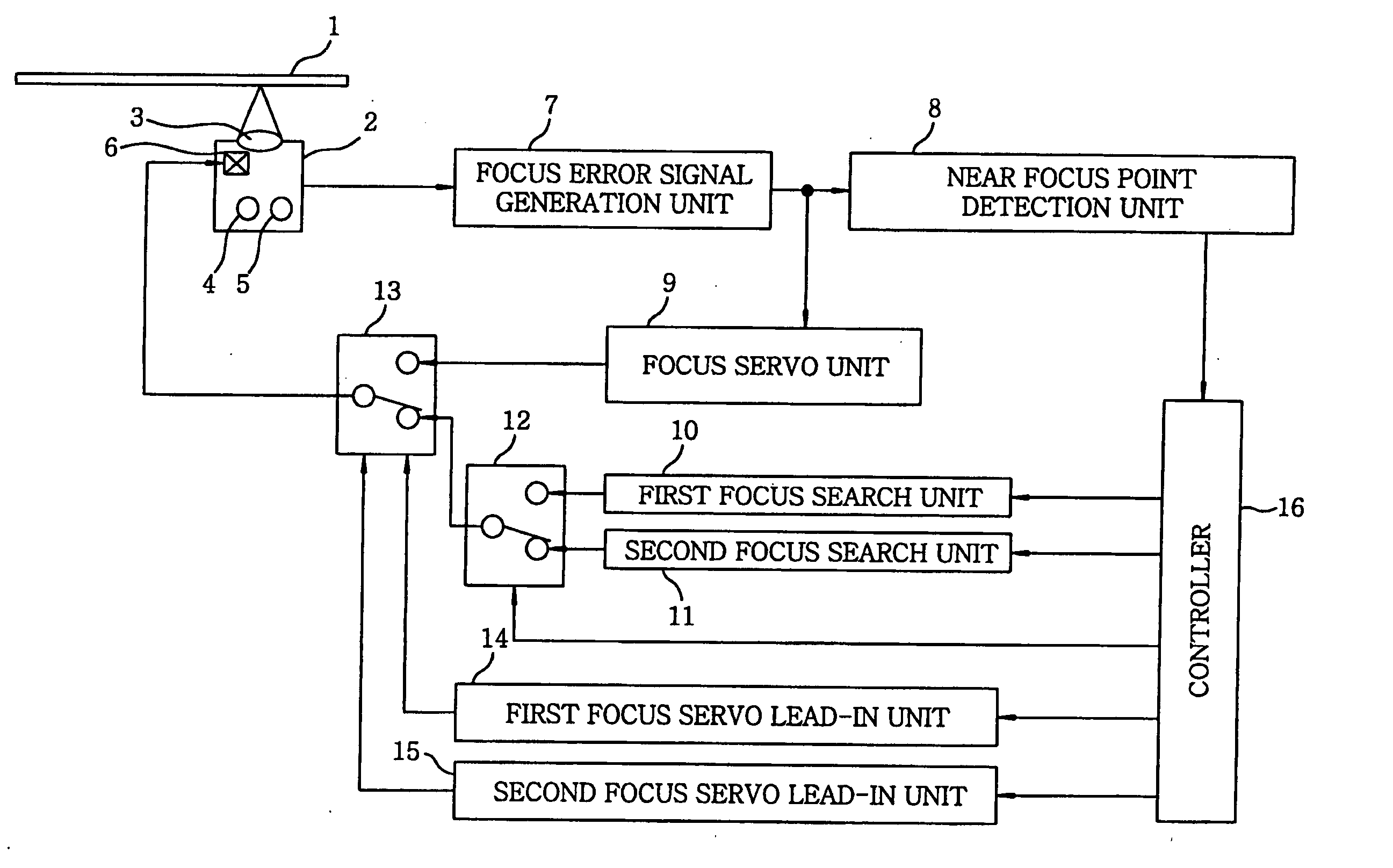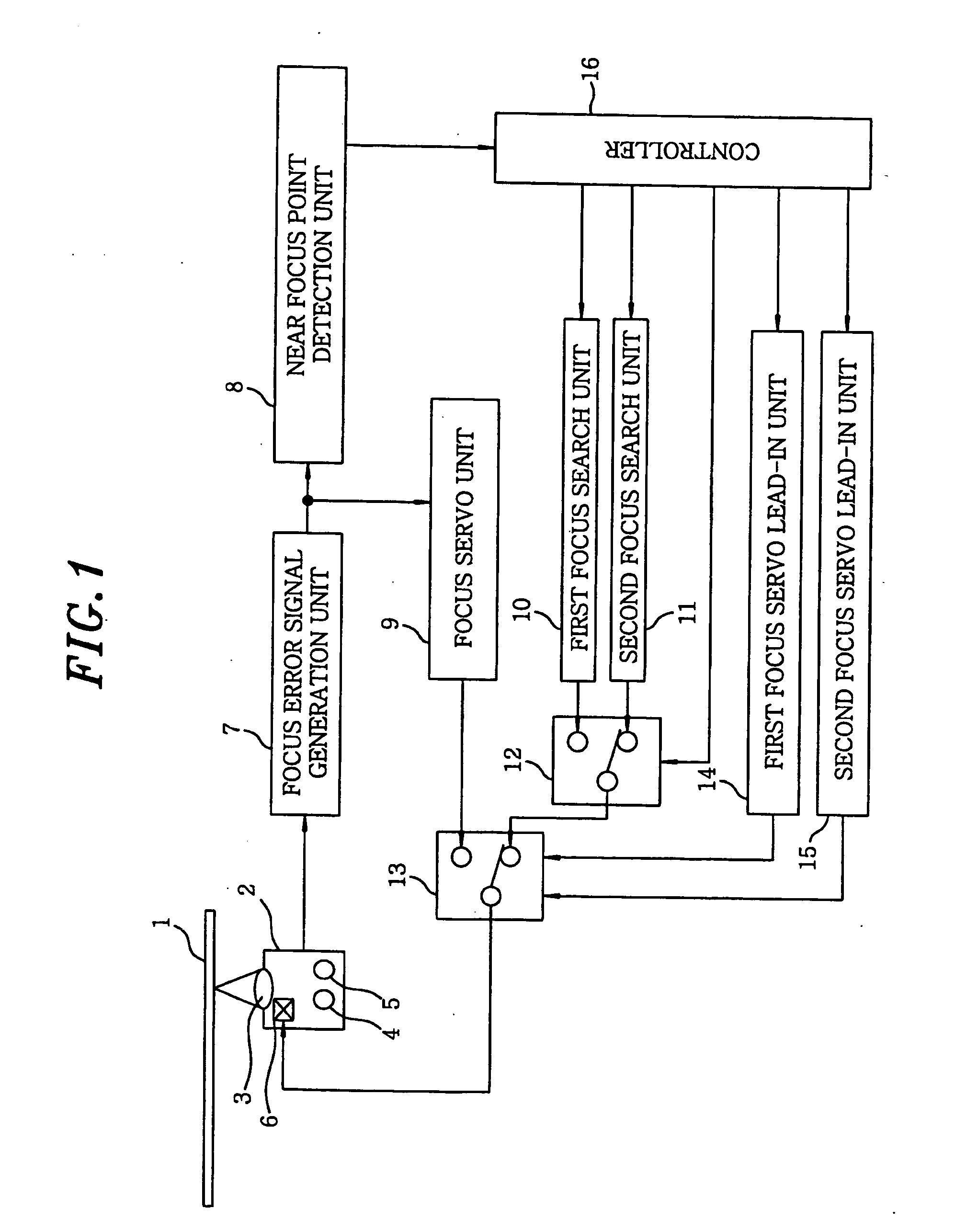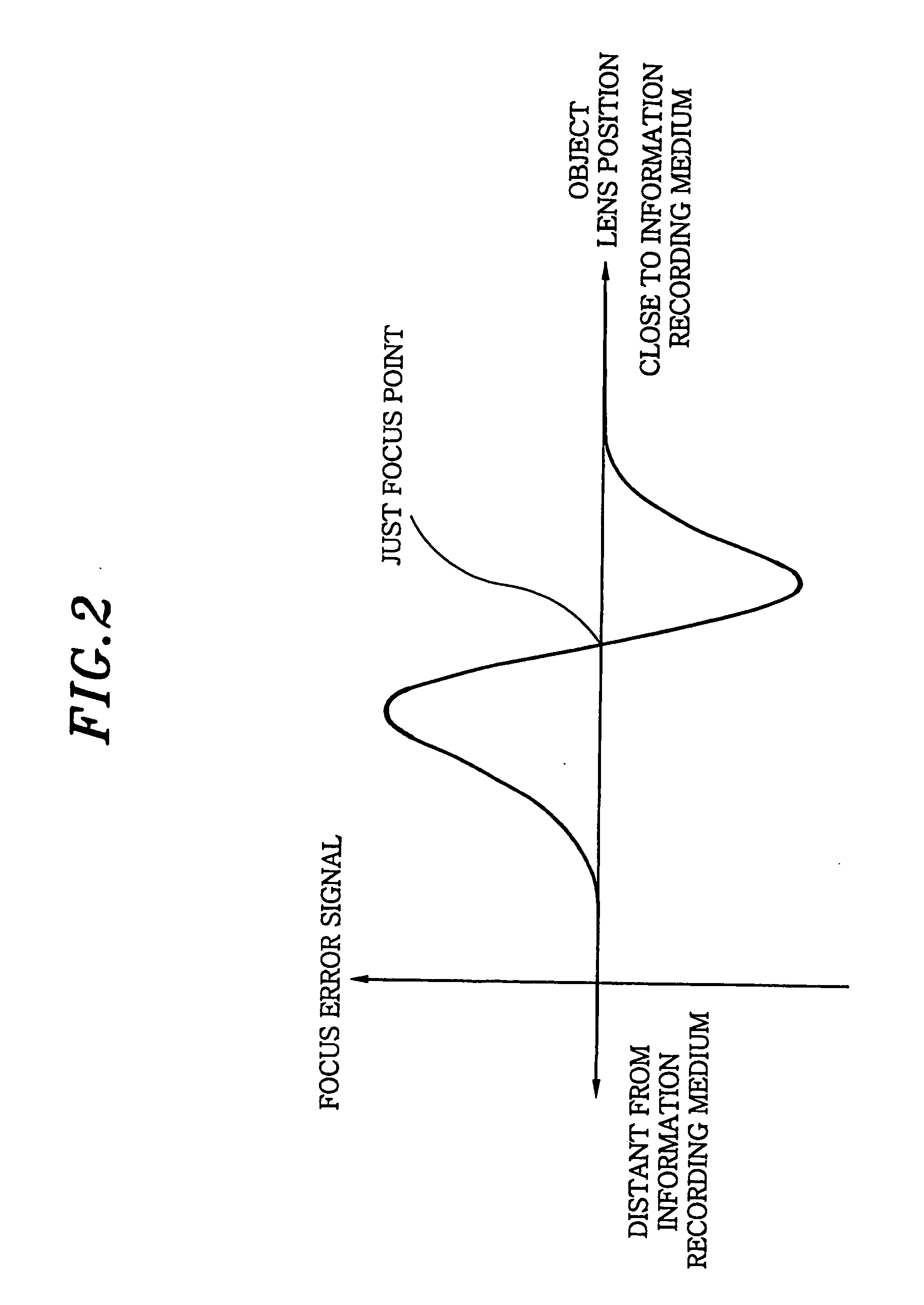However, the information reproduction apparatus is incapable of identifying the type of the information recording medium instantly after the information recording medium is loaded therein; and, consequently, there may occur a mismatching between the type of the optical information recording medium and that of the optical beam used to access it: for instance, the optical beam having the
wavelength intended for the DVD may be called upon to access the CD.
However, a precise determination of the type of the information recording medium cannot be guaranteed due to, e.g., malfunctioning of the apparatus, surface irregularity or
contamination of the media, or time limitation to make a correct decision, resulting in the aforementioned mismatching.
Furthermore, in case the wavelength of the optical beam is not compatible with the information recording medium, generation of a desired focus
error signal is not guaranteed even by performing the focus search, resulting in a failure of focus lead-in.
Further, in case of accessing, with one
optical pickup, a plurality of information
recording media, e.g., a CD and a DVD, each having a different depth from a surface thereof to an information recording plane, another problem may arise in that the object lens in the
optical pickup may collide with the information recording medium since the mechanical moving range of the object lens may overlap with the range of a warping of the information recording medium and its surface oscillation, thereby causing a failure in the focus lead-in and damaging the object lens and the medium.
In this case, if the focus lead-in operation is performed in accordance with the fake
signal, the focus servo will fail to initiate and, further, the information recording medium and the object lens may be damaged.
However, in such an optical information reproduction apparatus, since the focus lead-in operation is performed during the focus search in which the object lens moves away from the information recording medium, regardless of the wavelength of the optical
beam source and the type of medium, there may arise such other problems that are discussed below.
In this case, the
initiation of the focus servo would fail, damaging the information recording medium 1 and the object lens.
These problems may easily occur, in case of a mismatch between the optical information recording medium and the type of optical beam, e.g., the CD being accessed with the optical beam of the wavelength intended for DVD or the DVD being accessed with the optical beam of the wavelength intended for CD, which may result from the lack of accurate information on the type of the information recording medium.
However, suppose the type of information recording medium is not compatible with that of the optical beam, e.g., the optical beam to access the DVD being irradiated onto the CD disc or the beam to access the CD being irradiated onto the DVD disc: for instance, in the former case, a fake
signal might be detected at a point removed from the information recording medium, due to the oscillating profile of the focus
error signal prior to reaching the just focus point, as shown in FIG. 3.
Therefore, even when the focus lead-in operation is performed during the focus search while the object lens is moving away from the information recording medium, if the focus servo is tried to be led in by using an optical beam which is not compatible with the information recording medium, there still exists a possibility that the
initiation of the focus servo may fail due to the fake signal and, the information recording medium 1 or the object lens may be damaged.
Further, since the focus error signal, which is obtained when the type of the information recording medium is not compatible with that of the optical beam, is not originally intended to be used with the optical
pickup, it is possible that such signals are not defined in the specification of the optical
pickup.
Therefore, no inspection thereof can be performed when manufacturing the optical
pickup.
Accordingly, even when the wavelength of the optical
beam source is determined based upon the type of the information recording medium, which is presumed by performing the focus search right after loading the information recording medium into the optical information reproduction apparatus, a mismatching may still occur between the types of the information recording medium and the optical beam.
In the worst case, the
initiation of the focus servo may fail and further the information recording medium 1 and the object lens may be damaged.
In contrast, if the just focus point is detected while the focus search is executed in a direction of moving the object lens toward the information recording medium, since the direction of the focus search is reversed only after a predetermined time, even if the focus of the optical beam has passed the just focus point, the object lens may approach too close to the information recording medium and, in a worst case, collide with it, if the speed of the focus search becomes too fast.
On the other hand, if the focus search speed is adjusted to be slow to avoid the collision, the time required to initiate the focus servo would be not only extended but also the speed of the focus search would not render it possible to follow an up-and-down movement of the information plane of the information recording medium caused by, e.g., a surface irregularity of the information recording medium, thereby failing a proper focus lead-in operation and increasing the risk of initiation failure of the focus servo.
 Login to View More
Login to View More 


